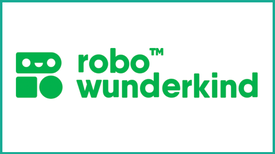
In general, the Robo Wunderkind kits include a variety of module blocks that each serve different functions. For example, you’ve got distant sensors, light sensors, motion sensors, motors, LED lights, buttons, wheels, lego adaptors, etc. This way, students can put together a variety of different creations and robots using different combinations of the modular blocks.
For example, here’s a “Robo Chameleon” that uses 6 different motors (as well as some other blocks) that students could create:
As shown in this video, students control their robotic creations through the use of the Robot Wunderkind apps. Currently, there are two apps, the Robo Live app and the Robo Code app, both of which are free and available on iOS, Android, Windows, and Mac operating systems. The team will also be releasing their new Blockly-based app by the end of 2019, which will include block-based programming options for the robots.
The Robo Live app is used to control your robotic creation in real time, and the Robo Code app offers more advanced functionality and lets you design specific programs for how you want your robot to handle various inputs and outputs.
Here’s an example of what the Robo Code app looks like in action:
One of my favorite features about the app is its intuitive interface for building programs and adding things like loops and triggers. It’s definitely well-designed for elementary and middle school learners, and makes programming your robot creations accessible even for early learners.
In addition to these two apps, teachers also have access to the complete curriculum for free on the Robo Wunderkind website (Under teaching materials). This curriculum is meant to be used across a variety of subject areas (e.g., science, math, art) and can be implemented in elementary and/or middle school classrooms. The curriculum is aligned with CCSS, ISTE, CSTA, and NGSS standards, and includes excellent scaffolding for teachers (and students) who are new to teaching these topics.
As is often the case with programming, robotics, computer science, and computational thinking, teachers don’t necessarily have the background or training in terms of the content. I think the Robo Wunderkind curriculum does an excellent job of scaffolding these lessons so that teachers without content expertise can still lead and support students through these lessons, and teachers with expertise can pick and choose what they want to use from the activities.
I also really love that the curriculum is available completely for free to teachers. You can download lessons, slides, worksheets, activities, and anything you need from their site, which is great to see. This is also a wonderful way to preview what the Robo Wunderkind curriculum is like to see if it’s a good fit for your classroom or school.
Finally, in terms of support and professional development, Robo Wunderkind will be launching Robo Wunderkind Academy and will be working with Eduscape as their partner to design the academy. This PD will be designed to help teachers leverage classroom applications of Robo Wunderkind through a comprehensive, hands-on and standards-aligned professional development program.
My only major critique in terms of the curriculum is the current lack of troubleshooting support. In general, students are going to have challenges, they will program things incorrectly, and they will, without a doubt, run into problems. For teachers who are new to this content, troubleshooting these issues can be a difficult and intimidating task. It would be wonderful to see in the lessons (or in the teacher handbook) general troubleshooting tips for the types of problems students might run into. That way, teachers can prepare for the general issues their students might be facing. However, despite this currently being an issue, the Robo Wunderkind team is gathering feedback from teachers who are working with their kits about the mistakes and problems students are facing. Strategies and troubleshooting tips for overcoming these common problems will be added to the teacher’s guide next month.
I also have one minor critique in terms of disassembling the blocks to build something new. In general, the connector blocks that you use to attach different blocks together can be difficult to remove, even with the included tool that is designed for this purpose. I could especially see early elementary students struggling with the task of dismantling these blocks. This isn’t a major issue, but if a teacher was trying to manage an entire classroom of students using these kids, I could see it being somewhat problematic. Fortunately, these issues have been noted by the team and will be fixed with the next generation of the product, which has just reached its goal on Kickstarter.
Overall, I think the education kits from Robo Wunderkind offer an excellent opportunity for elementary and middle school teachers to integrate robotics, coding, and STEAM skills into a variety of different classrooms. The kits are definitely affordable compared to other options, and the curriculum is well-scaffolded and clearly aligned with CCSS, ISTE, CSTA, and NGSS standards. These kits do an excellent job acting as an entry point for programming and STEAM skills, and the wide range of activities offer a lot of fun and engaging possibilities for elementary and middle school students alike. Despite the current absence of troubleshooting support for teachers, the price point, wide variety of creation possibilities, and accessibility of the apps make Robo Wunderkind an excellent resource for integrating STEAM and coding skills in the classroom.
I was not compensated for writing this review.
I received a Robo Wunderkind education kit for the duration of the review.

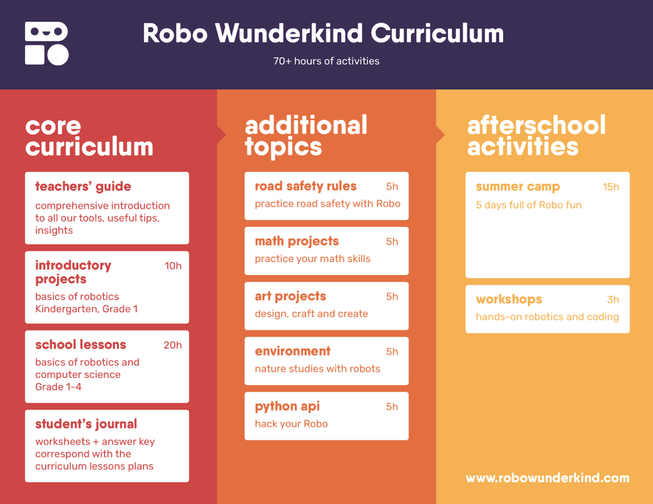



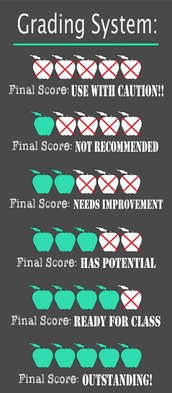






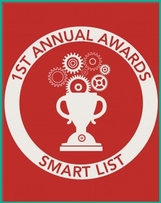
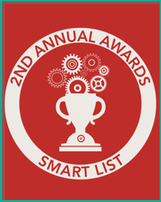


 RSS Feed
RSS Feed
